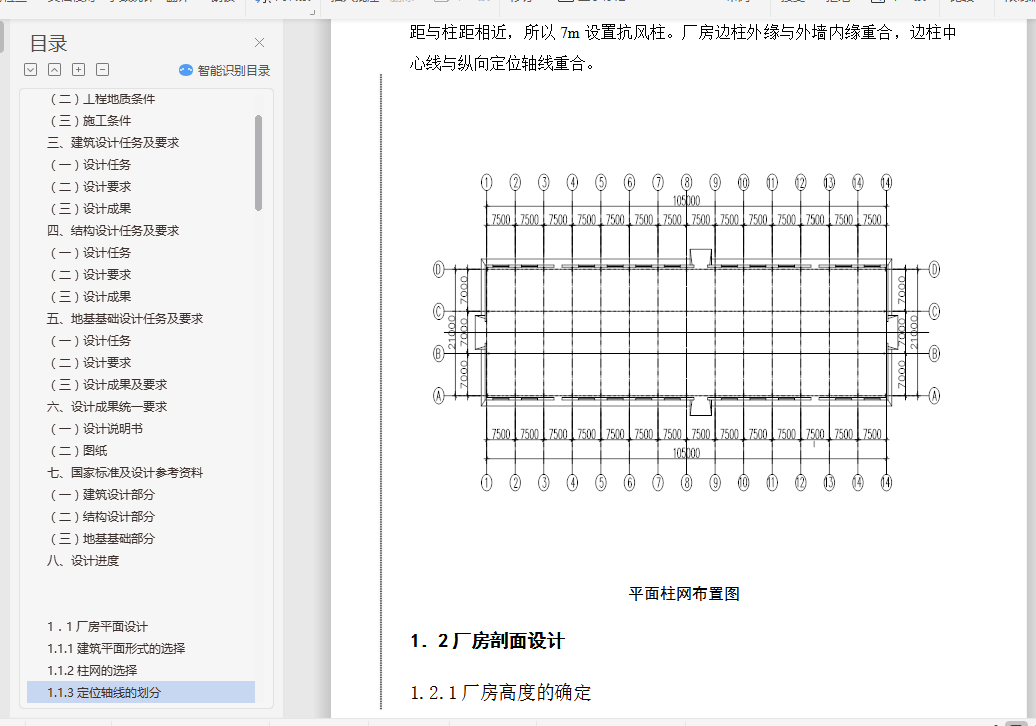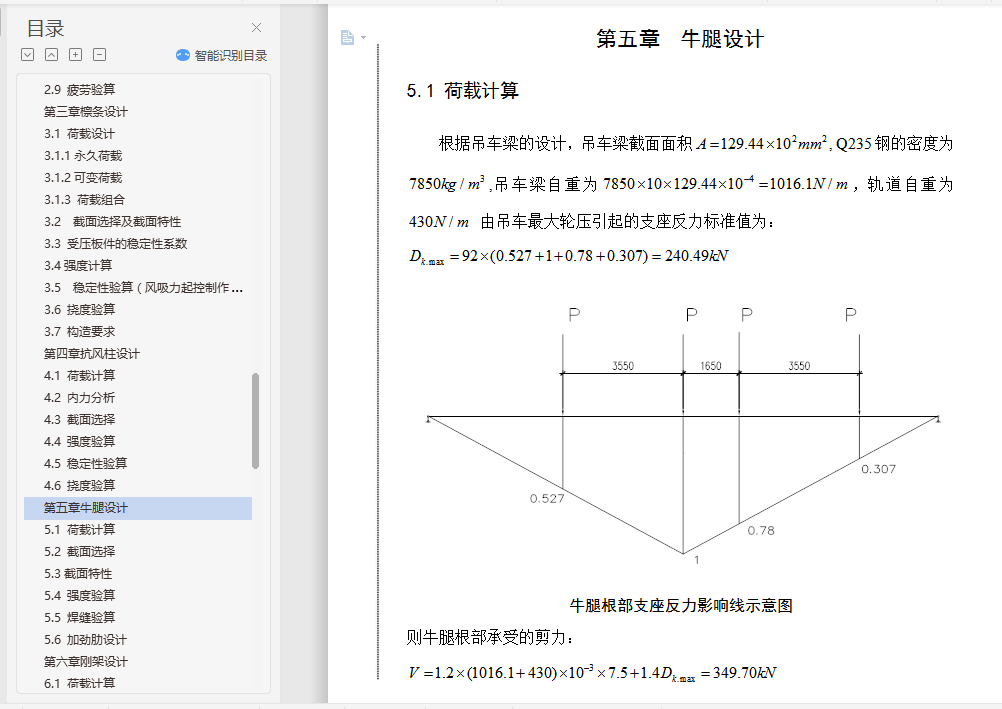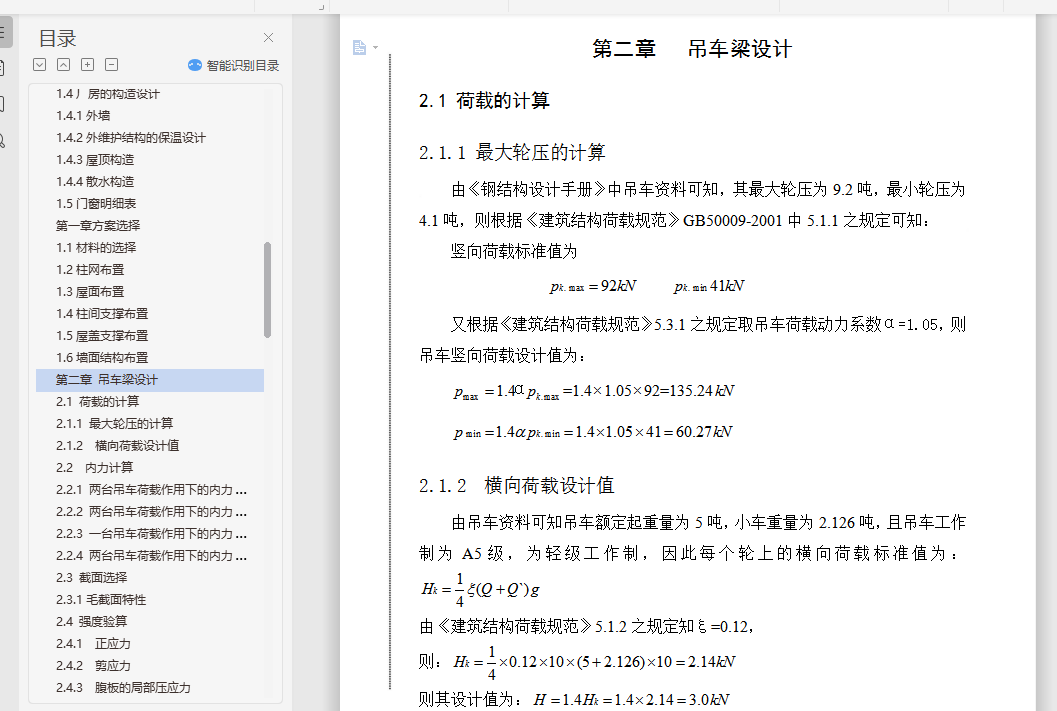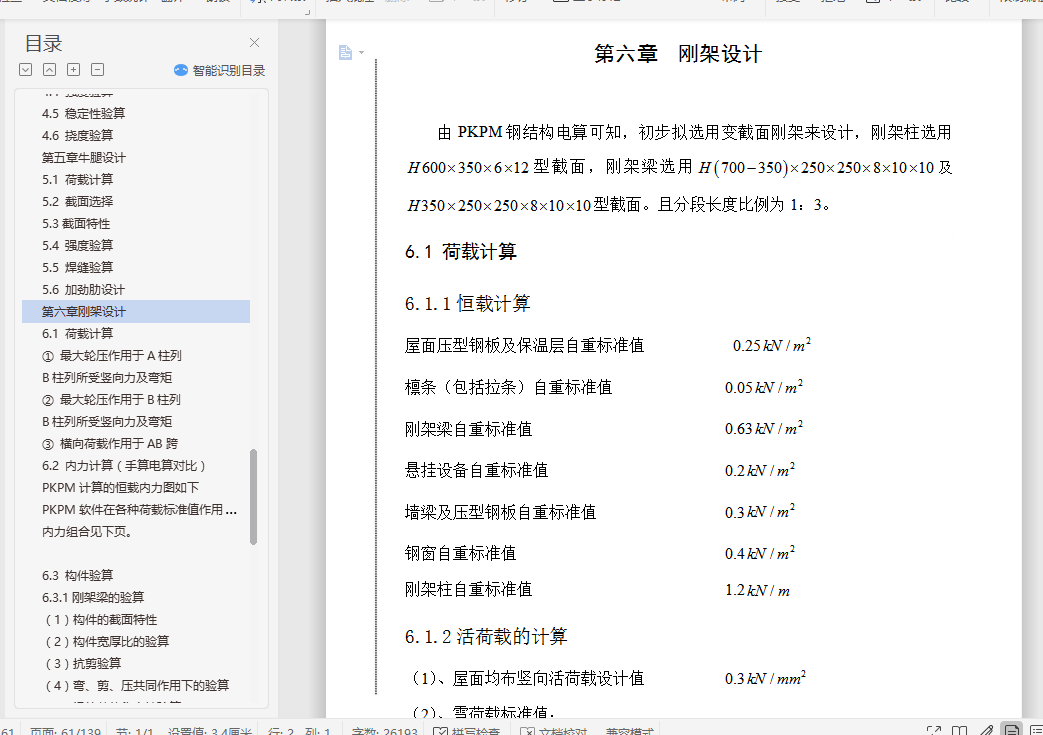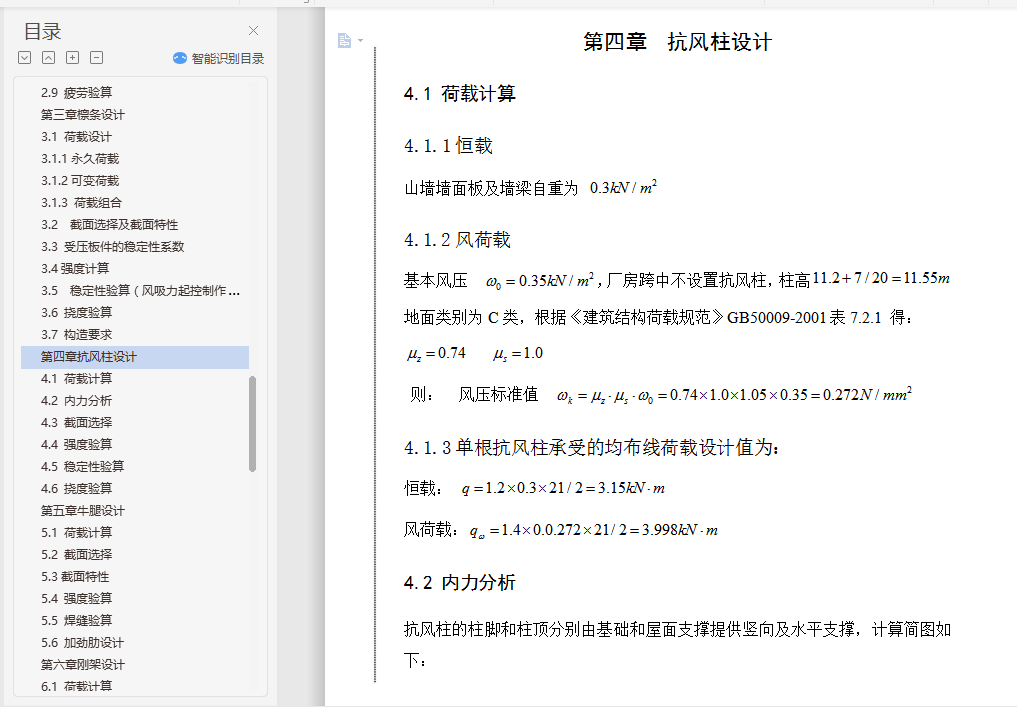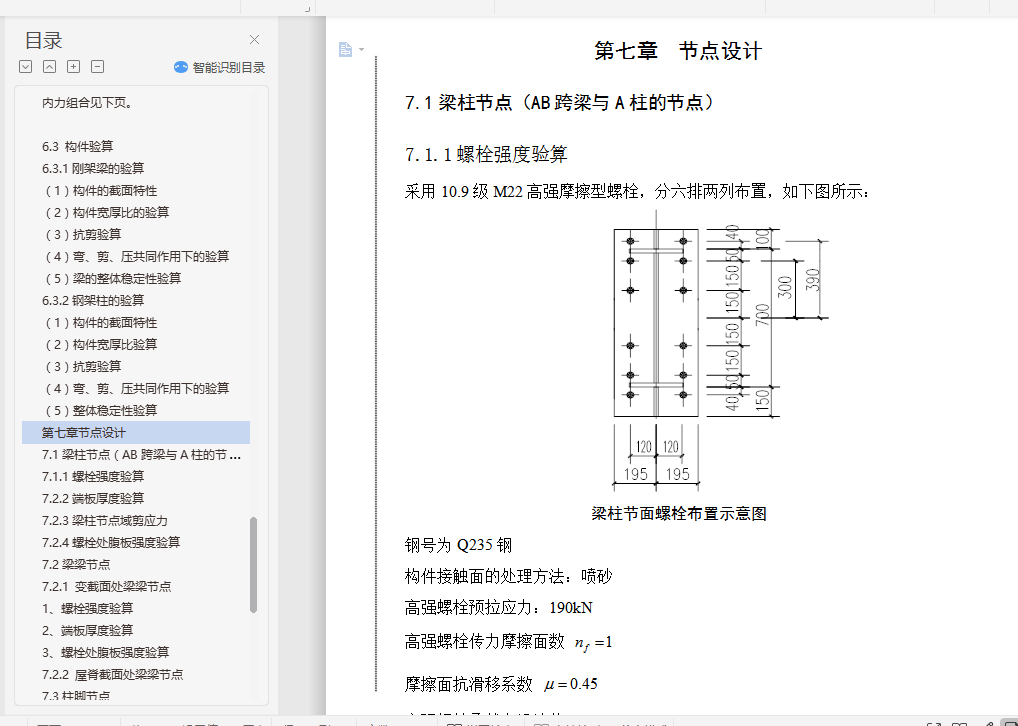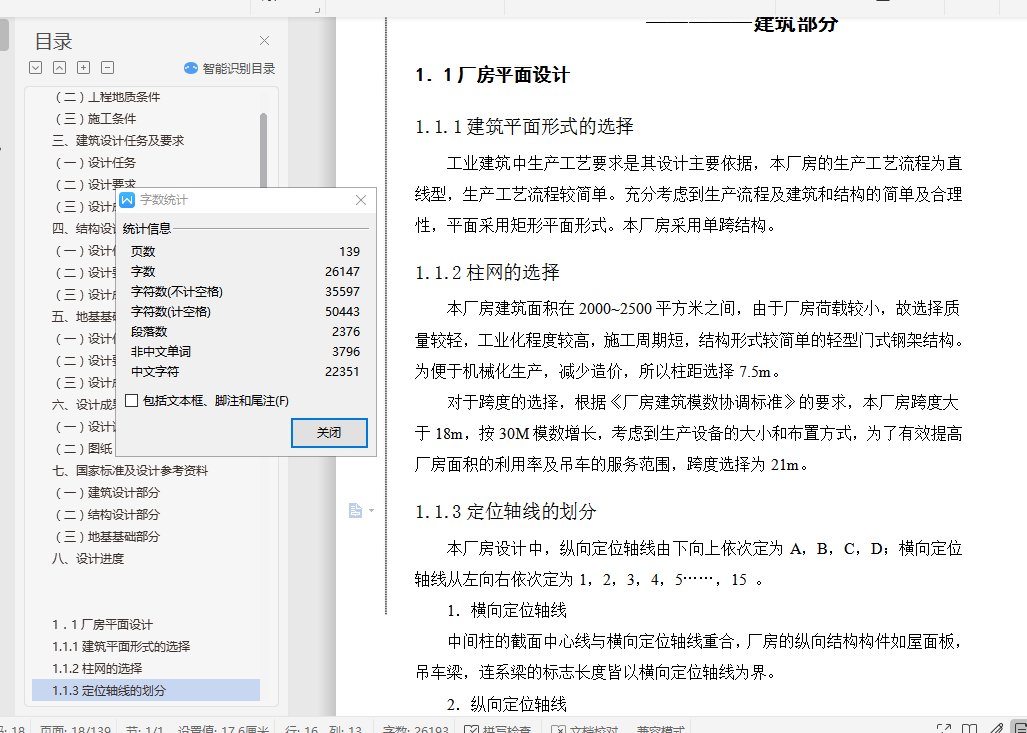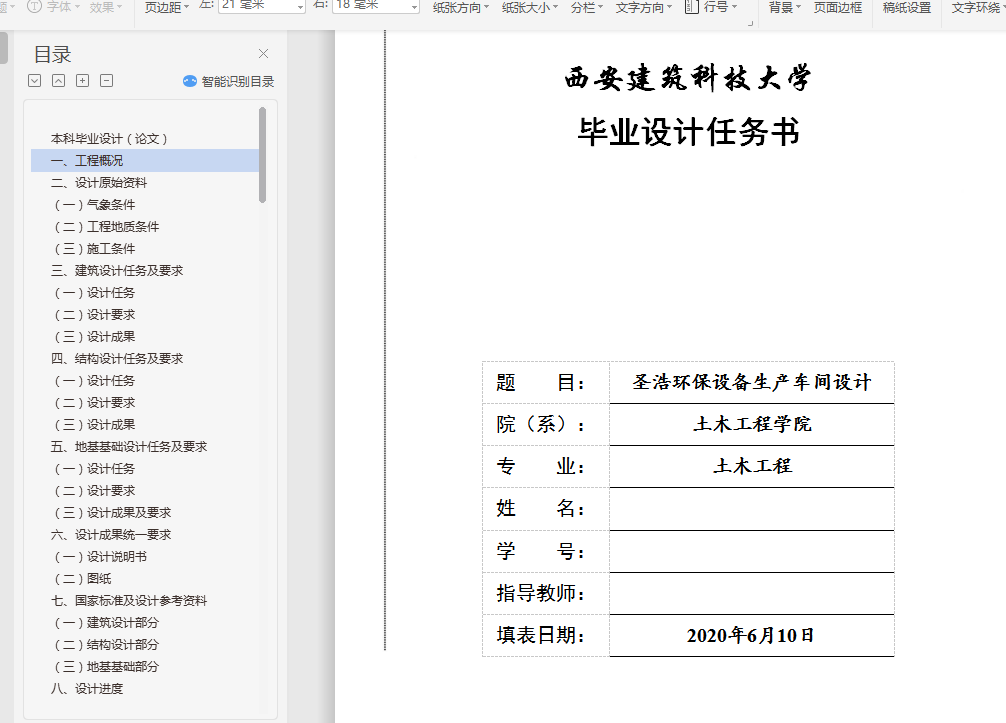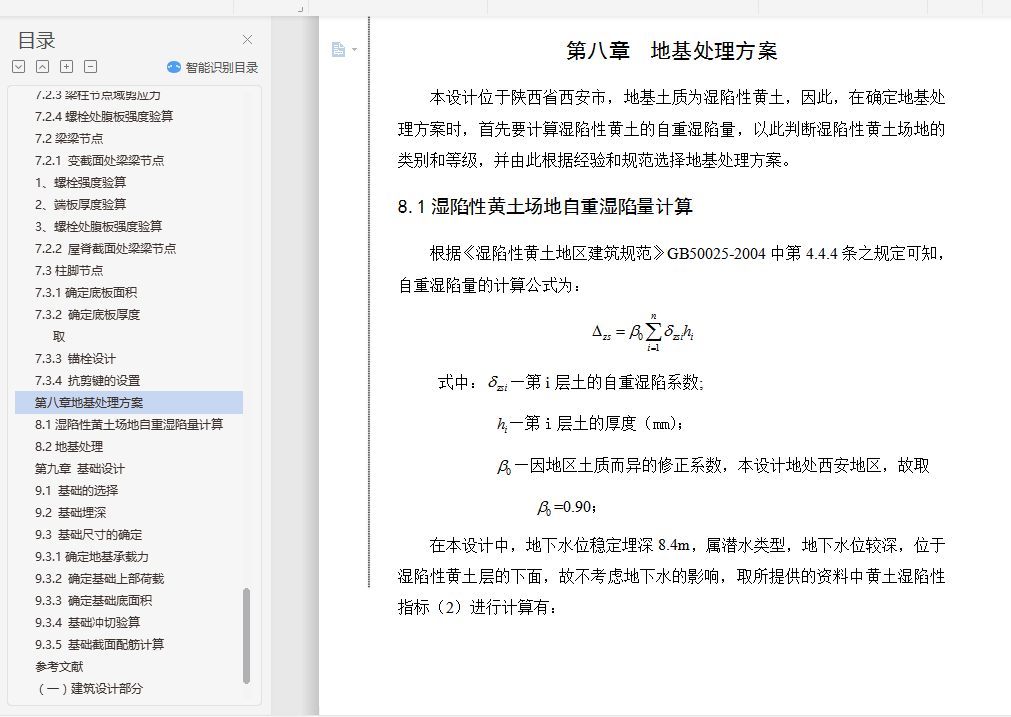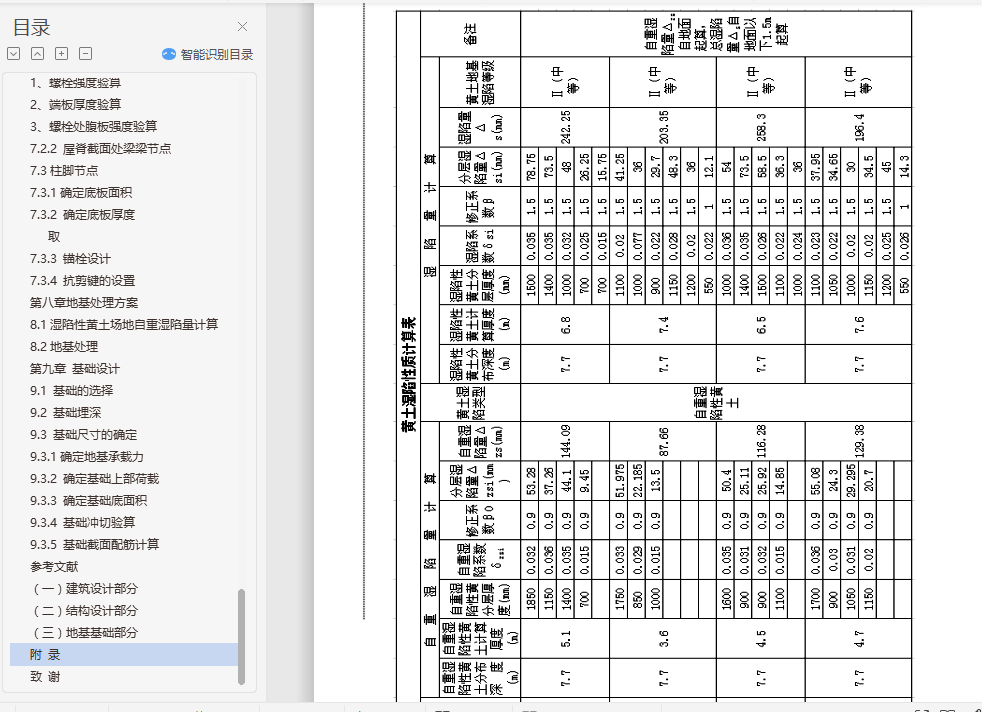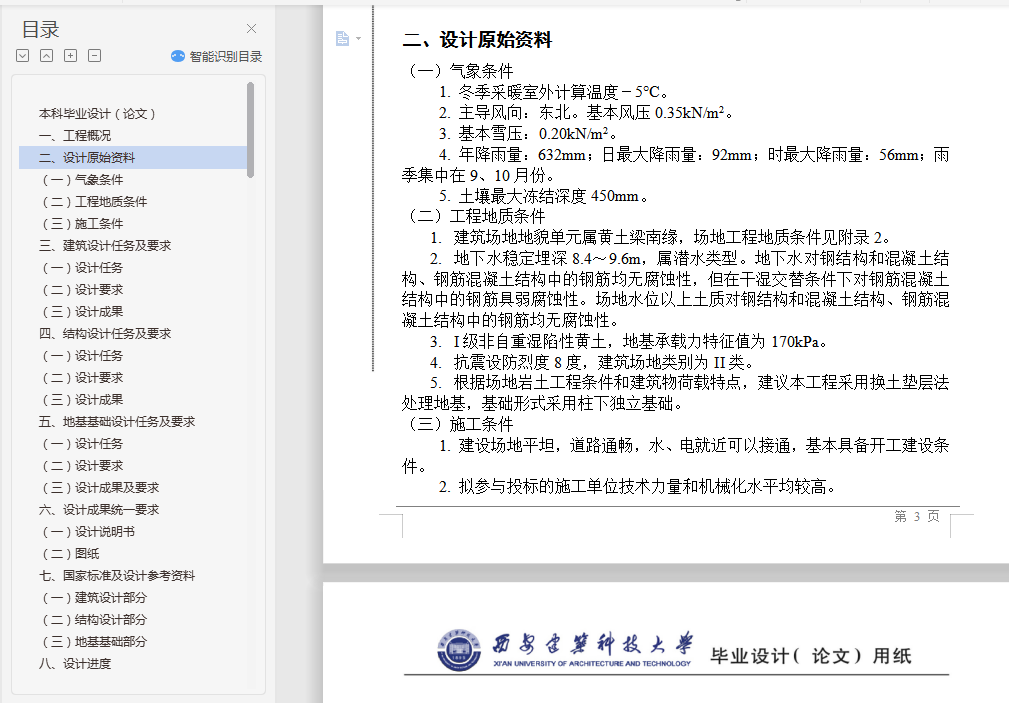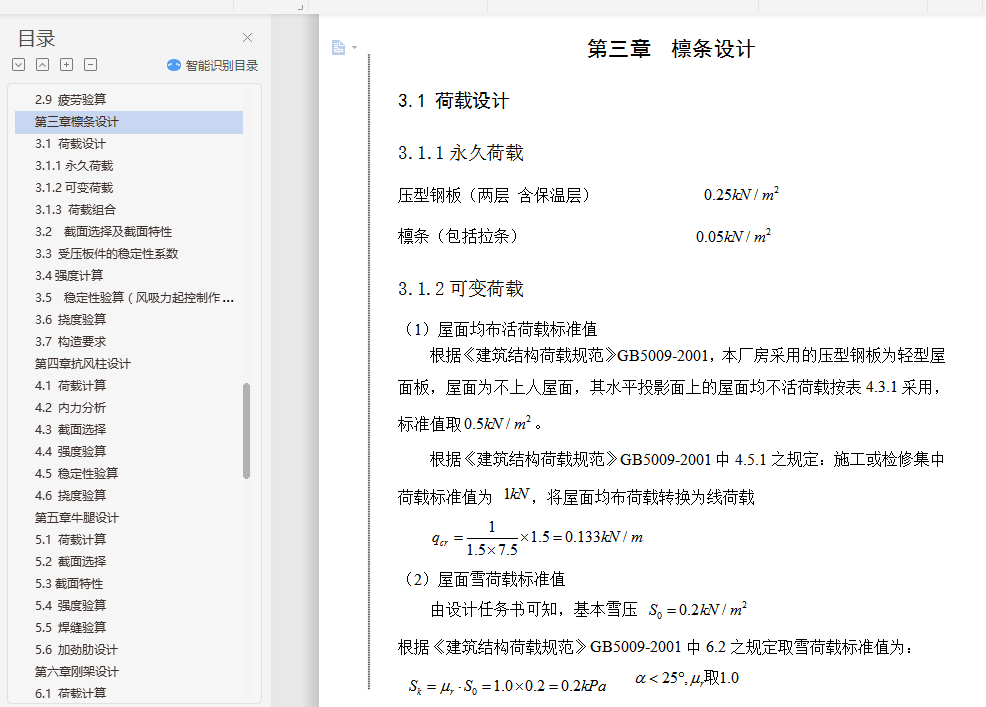摘要
本设计为轻型钢结构厂房,采用轻型门式刚架体系,轻型钢结构建筑质量轻,强度高,跨度大,钢结构建筑施工工期短,相应降低投资成本,经济实惠。它在我国有着较为广泛的应用前景。轻型钢结构的屋面荷载较轻,因而杆件截面较小、较薄。它除具有普通钢结构的自重较轻、材质均匀、应力计算准确可靠、加工制造简单、工业化程度高、运输安装方便等特点外,一般还具有取材方便、用料较省、自重更轻等优点。
本设计说明书包括建筑设计,结构设计和地基基础三部分。
建筑设计部分具体为建筑平面形式的选择,厂房剖面设计,厂房立面设计,厂房的构造设计,门窗明细表。
结构设计部分包括方案选择,吊车梁设计,檩条设计,抗风柱设计,牛腿设计,刚架设计(手算电算对比,内力组合),节点设计。各章节都详细演算了主要构件的计算过程。
地基基础部分包括地基处理方案,基础设计。
本次设计图纸部分有:厂房平面图,立面剖面及节点详图,刚架施工图,厂房檩条墙梁布置图,吊车梁施工图,支撑布置图,基础平面布置图,灰土挤密桩布置图。
关键词:轻型钢结构,门式刚架,建筑设计,结构设计,基础设计
Abstract
The design for the light steel structure plant, the use of light portal frame system, the construction of light steel structure light weight, high strength, large-span, steel structure construction period short, lower investment costs, economic benefits. In China it has a more extensive application prospects. Light steel structure of the roof load lighter, and thus a smaller cross-section bar, thin. In addition to its ordinary lighter weight steel structures, material uniformity, accurate and reliable stress calculation, simple processing, a high degree of industrialization, transport and other features easy installation, the general also has easy material to be used than the provinces, the advantages of lighter weight .
The design specification, including architectural design, structural design and foundation of three parts.
Architectural design for the construction plane to some of the specific forms of choice, plant profile design, plant design elevation, the structure of plant design, door and window schedules.
Part of the structural design, including program selection, the design of the crane beam, purlin design, pillar of wind-resistant design, corbel design, rigid frame design (hand-counting computer comparison, combination of internal forces), the node design. Chapters detail the main components of calculus calculation.
Foundation programs include ground handling, foundation design. Part of the design drawings are as follows: plant floor plan, Node elevation profiles and detailed, Frame Construction ,wall-beam purlin plant layout map, construction of crane beam map, support layout map, foundation plan, lime-soil compaction pile layout map .
Key Words: Light steel structure,Portal frame,Architectural Design,Structural design,foundation design
目 录
建筑部分
1.1 厂房平面设计 6
1.1.1 建筑平面形式的选择 6
1.1.2 柱网的选择 6
1.1.3 定位轴线的划分 6
1.横向定位轴线 6
2.纵向定位轴线 6
1.2 厂房剖面设计 7
1.2.1 厂房高度的确定 7
1.2.2 室内外高差的确定 8
1.2.3 厂房天然采光设计 8
1.2.4 厂房屋面排水设计 8
1.3 厂房立面设计 9
1.4 厂房的构造设计 9
1.4.1 外墙 9
1.4.2 外维护结构的保温设计 10
1.4.3 屋顶构造 11
1.4.4 散水构造 11
1.5 门窗明细表 12
结构部分
第一章 方案选择 13
1.1 材料的选择 13
1.2 柱网布置 13
1.3 屋面布置 13
1.4 柱间支撑布置 14
1.5 屋盖支撑布置 14
1.6 墙面结构布置 14
第二章 吊车梁设计 15
2.1 荷载的计算 15
2.1.1 最大轮压的计算 15
2.1.2 横向荷载设计值 15
2.2 内力计算 15
2.2.1 两台吊车荷载作用下的内力(3个轮子时) 16
2.2.2 两台吊车荷载作用下的内力(2个轮子时) 17
2.2.3 一台吊车荷载作用下的内力(2个轮子时) 18
2.2.4 两台吊车荷载作用下的内力(2个轮子时) 19
2.3 截面选择 20
2.3.1毛截面特性 20
2.4 强度验算 21
2.4.1 正应力 21
2.4.2 剪应力 22
2.4.3 腹板的局部压应力 22
2.4.4 腹板计算高度边缘处的折算应力 22
2.5 稳定性验算 23
2.5.1梁的整体稳定性 23
2.5.2腹板的局部稳定性 24
2.6 挠度验算 26
2.7 支承加劲肋的验算 26
2.8 焊缝计算 28
2.8.1 上翼缘与腹板连接处的角焊缝设计 28
2.8.2 下翼缘与腹板连接处的连接角焊缝设计 28
2.8.3 支座加劲肋与腹板的焊缝 28
2.9 疲劳验算 28
第三章 檩条设计 30
3.1 荷载设计 30
3.1.1 永久荷载 30
3.1.2 可变荷载 30
3.1.3 荷载组合 31
3.2 截面选择及截面特性 32
3.3 受压板件的稳定性系数 33
3.4 强度计算 36
3.5 稳定性验算(风吸力起控制作用) 37
3.6 挠度验算 38
3.7 构造要求 38
第四章 抗风柱设计 39
4.1 荷载计算 39
4.2 内力分析 39
4.3 截面选择 40
4.4 强度验算 40
4.5 稳定性验算 40
4.6 挠度验算 42
第五章 牛腿设计 43
5.1 荷载计算 43
5.2 截面选择 43
5.3 截面特性 44
5.4 强度验算 45
5.5 焊缝验算 46
5.6 加劲肋设计 47
第六章 刚架设计 49
6.1 荷载计算 49
① 最大轮压作用于A柱列 52
② 最大轮压作用于B柱列 52
③ 横向荷载作用于AB跨 52
6.2 内力计算(手算电算对比) 53
PKPM计算的恒载内力图 57
PKPM软件在各种荷载标准值作用下的计算结果 63
内力组合表 79
6.3 构件验算 86
6.3.1 钢架梁的验算 86
(1)构件的截面特性 86
(2)构件宽厚比的验算 86
(3)抗剪验算 87
(4)弯、剪、压共同作用下的验算 88
(5)梁的整体稳定性验算 90
6.3.2 钢架柱的验算 93
(1)构件的截面特性 93
(2)构件宽厚比验算 93
(3)抗剪验算 94
(4)弯、剪、压共同作用下的验算 94
(5)整体稳定性验算 95
第七章 节点设计 100
7.1 梁柱节点(AB跨梁与A柱的节点) 100
7.1.1 螺栓强度验算 100
7.2.2 端板厚度验算 101
7.2.3 梁柱节点域剪应力 101
7.2.4 螺栓处腹板强度验算 102
7.2 梁梁节点 102
7.2.1 变截面处梁梁节点 102
1、螺栓强度验算 102
2、端板厚度验算 103
3、螺栓处腹板强度验算 104
7.2.2 屋脊截面处梁梁节点 104
7.3 柱脚节点 104
7.3.1 确定底板面积 105
7.3.2 确定底板厚度 106
7.3.3 锚栓设计 106
7.3.4 抗剪键的设置 107
基础部分
第八章 地基处理方案 109
8.1 湿陷性黄土场地自重湿陷量计算 109
8.2 地基处理 113
第九章 基础设计 115
9.1 基础的选择 115
9.2 基础埋深 115
9.3 基础尺寸的确定 115
9.3.1 确定地基承载力 115
9.3.2 确定基础上部荷载 116
9.3.3 确定基础底面积 117
9.3.4 基础冲切验算 119
9.3.5 基础截面配筋计算 121
参考文献 124
(一)建筑设计部分 124
(二)结构设计部分 124
(三)地基基础部分 124
附 录 126
致 谢 127

